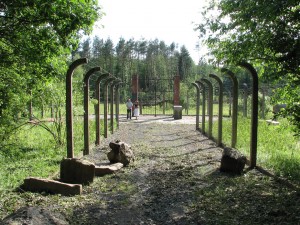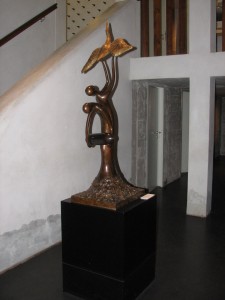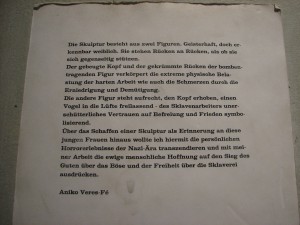This week the Documentation and Information Centre (DIZ), at Stadtallendorf in Germany, opened an exhibition commemorating 25 years of the memorial site to Münchmühle.
This was the camp to which Clare Galambos Winter was sent from Auschwitz in August 1944, one of 1000 women, mostly Hungarian Jews, to provide slave labour in the munitions factories.
In The Violinist I have described their arrival:
Continuing their journey into Hesse, they arrived on 19 August at their destination, a village called Allendorf. To their surprise, they saw no grey rubble or any sign of war, but rather, neat houses and flower gardens. The trees were red and gold which was unusual in August, but they thought little of that as they walked a few kilometres through a ‘gorgeous’ pine forest to a small camp. Here too, flowers had been planted. It seemed like a dream.
Named Münchmühle after the nearby mill, their new camp had been converted from a forced labour camp to a concentration camp by surrounding it with a three-metre barbed-wire fence. Its new inmates noticed that it wasn’t electrified. The wooden huts had dry wooden floors and bunks. ‘On each bunk was a thin grey blanket … One light bulb hung in the middle of the ceiling. We felt as if we had landed in the Ritz.’
It was infinitely better than Auschwitz, but, as they soon realised, it was to be no holiday camp.
I visited Stadtallendorf in 2008 as part of my research for The Violinist. The help I received there from Fritz Brinkmann-Frisch and Lydia Hartleben at the Documentation and Information Centre (DIZ) was invaluable to my research for this important chapter.






